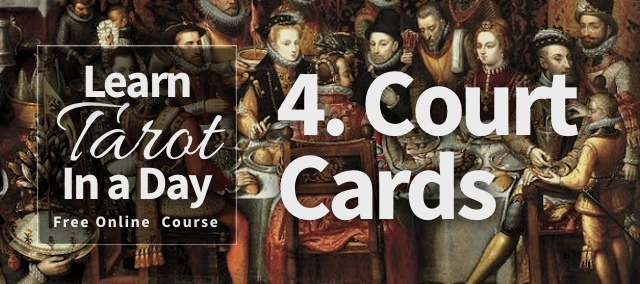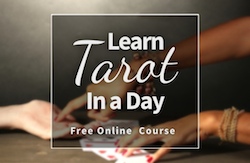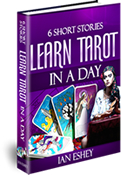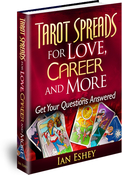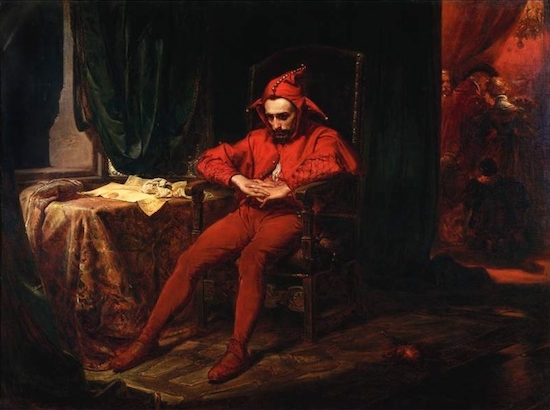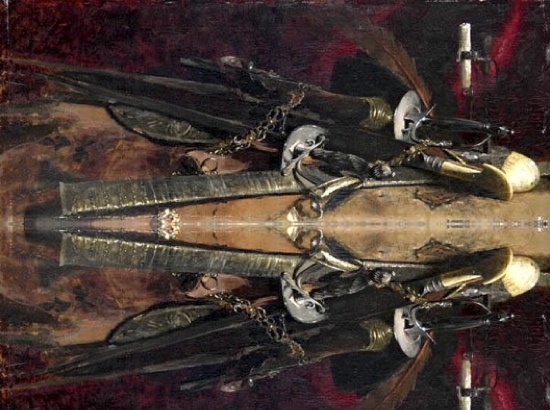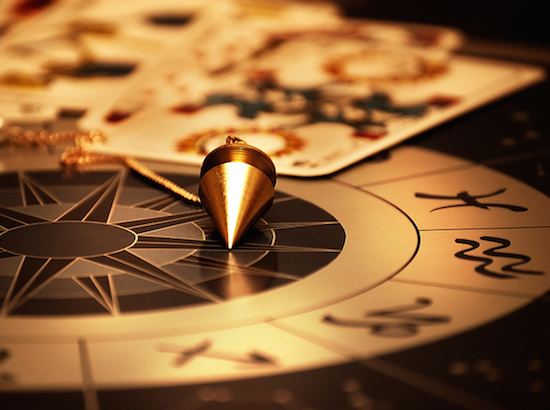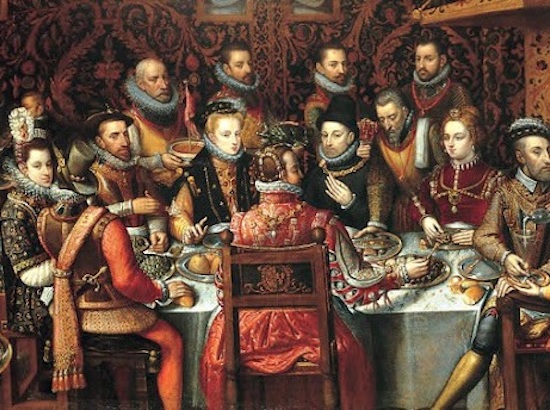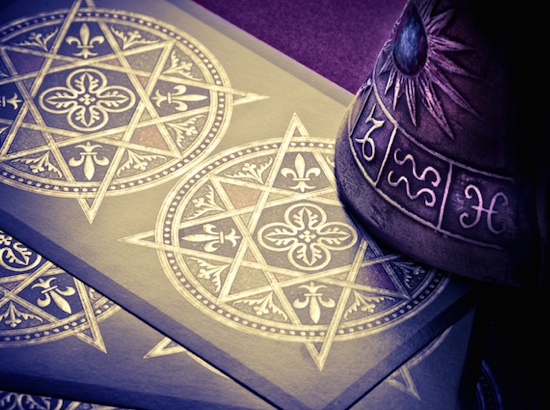Lesson 4: Court Cards
We are almost done with learning the cards: we have learned Major Arcana in Lesson 1, Swords and Cups in Lesson 2, and Wands and Pentacles in Lesson 3.
What I’m going to teach you now are the Court Cards: pages, knights, queens, and kings. Each suit has its own royal family, and they are known to be the biggest frustration for aspiring tarot students.
My experiences were equally irritating, until I finally found a way to make heads or tails of the Court Cards. I’ll share with you the same formula in a moment.
Court Cards Represent Different Personalities and the Actual People

What you need to understand is that Court Cards represent personalities. In a reading, they can point to actual people influencing you or to aspects of yourself that you need either more of or less of in a particular situation.
Note that the card’s sex can be misleading: pages and knights can represent both males and females. On the other hand, queens and kings are such strong, mature female/male stereotypes that representing the opposite sex is more rare for them.
A Court Card in a reading can point to an actual person influencing you, or to aspects of yourself.
Two Forces That Drive Each Court Card

Court cards are both intriguing and tricky to learn because they represent two forces at the same time:
- Each card’s basic nature (which of the four tarot suits it belongs to), and
- Traditional responsibilities of its rank in the court hierarchy.
To simplify the suits for the moment, we have passion (Wands), emotions (Cups), rationality (Swords), and money (Pentacles). And each suit’s court has four “positions” and its stereotypes:
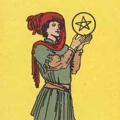
Page
Curious youngster, seeks experience.
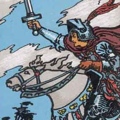
Knight
Young action type.
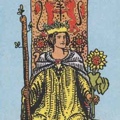
Queen
Wisdom and influence.
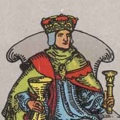
King
Wisdom and authority, in control.
So far, so good. You can deduce the meaning of each card from the combination of these two factors alone.
However, it can get quite confusing when you try it. For example, let’s look at the King of Cups. Are we talking about someone who is wise and in control but is at the same time… what? Very emotional?
Nope. His wisdom is in understanding emotions, both his and those of others. Moreover, he is able to exercise his control through emotions! Thus, he can be a master manipulator when he decides it’s needed. On the other hand, someone perfectly in tune with both his own and other people’s emotions won’t do any such thing lightly.
In other words, you could write a whole book on each of the Court Cards (and in fact, some people did).
We want to be able to learn each card quickly instead.
Each Court Card represents both the nature of its tarot suit and the responsibilities of its rank in the court.
Learning the Court Cards
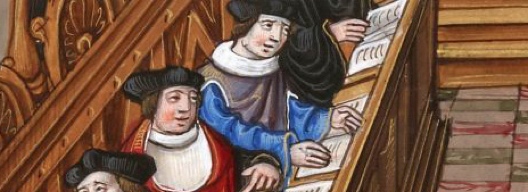
The easiest way to learn the Court Cards is to find the person with those personality traits and characteristics. And there is a little trick here; since the Court Cards represent stereotypes, the perfect candidates are members of your family or famous celebrities and the like.
Here is the summary that will help you further. I have grouped cards by their suit. Read the stereotypes and try to match the cards to real people.
Wands are Creative and Adventurous
Spontaneity and a lot of action make them very charismatic:
 Page of Wands – Free-spirit, adventurous youth with an endless source of new ideas he wants to try.
Page of Wands – Free-spirit, adventurous youth with an endless source of new ideas he wants to try.
Knight of Wands – A living embodiment of daring and enthusiasm.
Queen of Wands – Very results-oriented lady; better don’t get in her way.
King of Wands – Natural-born leader of people, very charismatic.
Cups are Empathic
They are extremely good at reading people. They tend to be dreamers, very intuitive but not very pragmatic:
 Page of Cups – A dreamer, a sensitive and emotional artistic type.
Page of Cups – A dreamer, a sensitive and emotional artistic type.
Knight of Cups – Chivalrous, romantic, the true knight in shining armor.
Queen of Cups – Beautiful and caring, a mother figure.
King of Cups – A visionary and born diplomat.
Swords are Guided by Dry Logic
They are usually perceived as brilliant but cold:
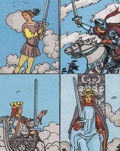 Page of Swords – Quick-witted, intelligent youngster; quite defiant and rebellious.
Page of Swords – Quick-witted, intelligent youngster; quite defiant and rebellious.
Knight of Swords – Gallant hero, but actually quite self-seeking.
Queen of Swords – An “ice queen”.
King of Swords – Born general, the supreme strategist.
Pentacles are Conventional and Responsible
They are “slow but sure” achievers:
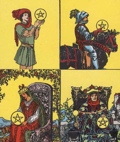 Page of Pentacles – Ambitious yet committed and responsible, an ideal student.
Page of Pentacles – Ambitious yet committed and responsible, an ideal student.
Knight of Pentacles – A methodical and diligent perfectionist.
Queen of Pentacles – Devoted and pragmatic, the ideal head of a household.
King of Pentacles – A master of material concerns; everything he touches turns to gold.
I believe you have matched many stereotypes to actual people you know right away. Try again, this time with cards in front of you. You can use this flashcard deck:
Learn the Court Cards by matching each stereotype to the real person you know (or a celebrity).
Great Spreads to Start With

When learning tarot cards, the most fun way to start is to read the cards for yourself. But there is a problem. When you must check reference material for every card, it’s pretty awkward to constantly go from cards to book, and then go back to the spread and remind yourself what a particular position represents in the layout.
These interruptions break the flow and disconnect you from your intuition. To avoid this, start with simple layouts with only a few cards (or even a single card) to interpret.
Start with simple spreads with only a few cards to interpret.
Card of the Day Spread
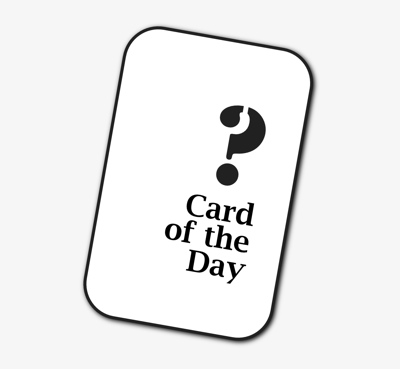
The easiest way to begin is with single card readings. A “Card of the day” reading can be both fun and enlightening.
Shuffle the cards and pull one from the deck. Look at the card. Notice the symbols on the picture. Do any of the symbols grab your attention? If so, look more closely. For example: If it’s a ship, how does it feel to you? Is it arriving with news? Is it departing on a long and perilous journey?
Or maybe it’s a person. What emotions does the person convey? You get the point.
Note that it’s best not to analyze anything yet but simply to keep it fun. Just immerse yourself in the beauty of the picture. You will immediately start to notice little details and get curious about them. Your imagination will automatically jump in to fill in the gaps.
Then, begin to think about the meaning of the card. At this point you can look it up if you need to.
Finally, think of how the card’s meaning relates to your day. Again, don’t investigate all the options. The first thing that comes to your mind is the one you are looking for. This is your intuition signaling you, and you better believe in it.
It’s important to experiment and have fun instead of boring yourself and quitting.
Pros and Cons Spread

Another layout great for learning the ropes is the Pros and Cons spread. It’s only two cards. One card represents good aspects of a particular situation and the other card represents bad aspects.
First, decide on a topic. Pick a problem that is bothering you or something you think about a lot at the moment.
Next, form the question. Avoid questions that produce a yes/no answer. Try “Tell me more about X,” or “What should I pay attention to when dealing with Y?”
Now, shuffle the deck and pick two cards. Put them one against the other so that any contrast immediately grabs your attention.
Is there anything you notice? Let your subconscious signal say what is important. In other words, the first thoughts or emotions that come to your mind are precisely what your intuition is trying to make you see.
Don’t overdo it. When you feel that you are reading the cards mechanically, stop. Otherwise it will get boring quickly, eventually eroding your motivation.
Past, Present, Future Spread
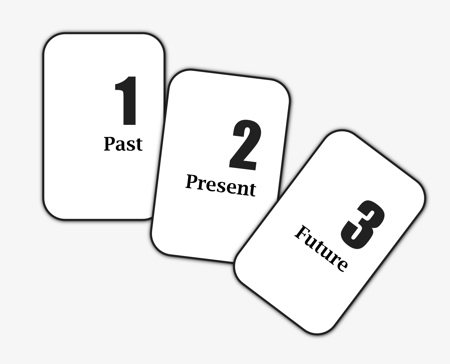
Probably the most popular “beginner” spread, here is the Past-Present-Future layout. With only one more card, you get this beautiful little spread. Many generations of tarot enthusiasts have learned their cards properly with exactly this layout.
Again, the relationship among cards is what counts. With this spread, you discover another very important relationship: natural progression.
With three cards in positions for past, present, and future of the problem, this progression is very clear. It creates a context around the problem.
Your intuition here signals to you how the problem came to be (the Past), what is crucial or overlooked at this moment (the Present), and where the situation is headed if you don’t change your approach (the Future).
With only these three spreads, you can have fun for days while both learning the cards and learning how to recognize relationships between them.
And these three spreads are not just for practice; you can check this real-life reading example here:
What Next
What to remember from this lesson is that Court Cards are driven by the combination of two forces: by their suit’s natural tendencies and by the responsibilities of their rank.
And if you have gone through all the lessons so far, congratulations! You have learned all seventy-eight tarot cards: Major arcana in lesson one, Swords and Cups in lesson two, and Wands and Pentacles in lesson three.
It’s time to start reading the cards in the next lesson.
